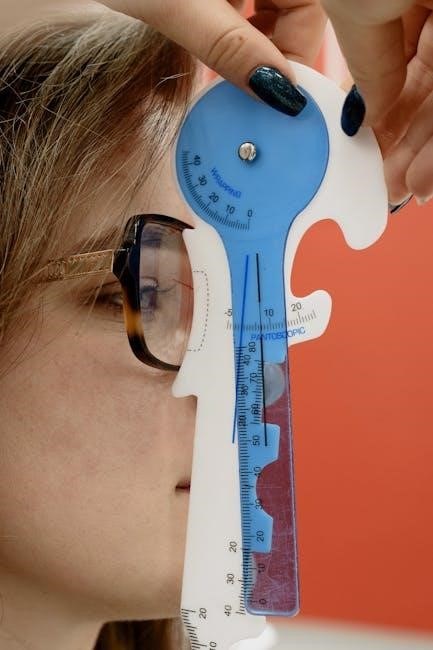Seca Weighing Scale Manual: A Comprehensive Guide
Welcome to the essential guide for your Seca weighing scale! This manual provides you with the knowledge to confidently use and maintain your device. Learn about proper operation, ensuring accurate weight measurements for healthcare, fitness, and personal well-being, directly from the manufacturer’s specifications.
Seca scales are renowned for their precision and reliability in weight measurement, making them a staple in healthcare facilities, fitness centers, and homes. With a legacy of innovation, Seca offers a diverse range of scales designed to meet various needs, from precise baby weighing to comprehensive patient monitoring. Understanding the core functionality and features of your Seca scale is paramount for accurate and consistent results.
Seca’s commitment to quality ensures that each scale adheres to stringent standards, delivering trustworthy data for informed decision-making. Whether you’re a healthcare professional, fitness enthusiast, or simply monitoring your weight at home, familiarizing yourself with your Seca scale is crucial. This guide will walk you through the essentials, helping you unlock the full potential of your Seca weighing device, and how it helps your overall health.
Importance of the User Manual
The user manual is your primary resource for understanding the intricacies of your Seca weighing scale; It provides comprehensive instructions on proper usage, maintenance, and troubleshooting, ensuring you get the most accurate and reliable results. Ignoring the manual can lead to incorrect measurements, damage to the scale, and potentially voiding the warranty.
Within the user manual, you’ll find detailed explanations of the scale’s features, calibration procedures, and safety precautions. It also offers guidance on resolving common issues, such as error messages or inaccurate readings. By consulting the manual, you can avoid costly repairs and ensure the longevity of your Seca scale. Furthermore, the manual often includes helpful tips for optimizing performance and maximizing the scale’s capabilities for various applications. It is an invaluable tool that empowers you to use your Seca scale effectively and confidently, guaranteeing consistent and dependable weight measurements.

Understanding Seca Scale Models
Seca offers diverse scale models designed for specific needs. Understanding the differences between series like the 700, 800, and 300 is crucial for selecting the right scale and utilizing its features effectively, as detailed in the user manual.
Seca 700 Series: Digital Column Scales
The Seca 700 series represents digital column scales tailored for professional medical environments. These scales, commonly found in hospitals and clinics, are designed for precise weight measurement of patients. The Seca 700 series scales boast a high-precision weight measuring system, ensuring accurate readings in both pounds and kilograms. With a substantial weight capacity, often up to 500 pounds (220 kilograms), they accommodate a wide range of individuals.
These scales prioritize user-friendliness, offering features like easy-to-read displays and, in some models, integrated height measurement capabilities. The Seca 700 series emphasizes reliability and durability, essential for demanding healthcare settings. Always consult the user manual for specific model instructions, calibration procedures, and maintenance guidelines to ensure optimal performance and longevity. Service manuals also provide in-depth details on electronics.
Some models also have Body Mass Index (BMI) calculation and wireless data transfer.

Seca 800 Series: Personal Scales (e.g., Seca 874, Seca 876)
The Seca 800 series encompasses personal scales designed for individual weight management and monitoring. Models like the Seca 874 and Seca 876 are popular choices for home use and fitness environments. These scales typically feature a flat, compact design for easy storage and portability.
The Seca 874 uses four load cells to detect weight, providing accurate measurements, and often allows users to switch between kilograms (kg) and pounds (lbs). Some models offer additional features such as calculating BMI, and the 2-in-1 function, which is used for babies or toddlers. The Seca 876, with a capacity up to 250 kg (550 lb), operates on batteries and provides precise measurements.
Consult the user manual for detailed instructions on operation, battery replacement, and troubleshooting. Proper usage ensures accurate readings and extends the scale’s lifespan. The manuals provide safety guidelines and essential information for the proper maintenance of your Seca scale.
Seca 300 Series: Baby Scales (e.g., Seca 334, Seca 354, Seca 384)
The Seca 300 series specializes in baby scales, designed for accurate and reliable weight measurement of infants. Models like the Seca 334, Seca 354, and Seca 384 are commonly used in hospitals, clinics, and homes to monitor a baby’s growth and development. These scales are engineered to provide precise readings, crucial for tracking infant health.
Seca baby scales often come with features like a weighing tray to comfortably and securely hold the baby during measurement. Some models, such as the Seca 354 and Seca 384, may also include advanced functionalities like the “hold” function, which stabilizes the weight reading even if the baby moves.
Refer to the product manual for detailed instructions on using the scale, including calibration procedures and maintenance tips. The manual provides essential guidance on ensuring accurate measurements, battery information, and troubleshooting common issues. Regular calibration, as outlined in the manual, is key to maintaining the scale’s precision and reliability for monitoring infant weight.

Key Features and Functionality
Seca scales boast accurate weight measurement, often switchable units (kg/lbs), and specialized functions like 2-in-1 weighing for babies and toddlers. Consult your specific model’s manual for details on maximizing these features.
Accurate Weight Measurement
Achieving precise weight measurements is paramount with Seca scales. Many models employ advanced load cell technology to ensure accuracy, with weight detected by four load cells. The Seca 700 series, for example, uses a high-precision system providing readings in pounds or kilograms. It is essential to understand the factors influencing accuracy, such as proper scale placement on a level surface. Before each use, verify the scale’s calibration, following the specific instructions in your Seca scale manual. Consistent and correct procedures, detailed in the manual, are vital for reliable results.
Seca scales often have a special damping function to equalize movements, this ensures even more accurate and consistent results. The Seca 876 is a product manufactured by seca gmbh amp; co. kg. It is a weighing scale that can measure weights up to a maximum of 250 kg (550 lb or 39 pcs); The scale operates on 6 x AA batteries and has a measurement accuracy of 100 g (amp;lt;150 kg) or 200 g (150 kg).
Units of Measurement (kg/lbs Switching)
Seca scales offer the flexibility to display weight in kilograms (kg) or pounds (lbs), catering to diverse user preferences and regional standards. Understanding how to switch between these units is crucial for accurate interpretation and recording of weight data. The Seca scale manual provides clear instructions on how to perform this conversion, often involving a simple button press or menu selection. Familiarize yourself with the specific procedure for your Seca model to avoid errors in weight tracking. This feature is particularly useful in healthcare settings, where both metric and imperial units may be used.
The weight display can be easily switched between kilogrammes (kg) and pounds (lbs). Always ensure you are using the correct unit of measurement for your needs. Regularly verifying the selected unit before each weighing session is a best practice for reliable data collection. Some Seca models may also offer other units of measurement; consult the manual for complete details. Remember, consistency in unit selection is key to accurate weight management.
2-in-1 Function (Baby/Toddler Weighing)
Select Seca scales feature a 2-in-1 function, enabling the weighing of both adults and infants using the same device. This is particularly useful for monitoring the weight of babies and toddlers. The Seca manual provides step-by-step instructions on how to activate and utilize this mode. Typically, it involves using the TARE function with the adult holding the child, thus determining the child’s weight accurately. Always ensure the scale is placed on a stable, level surface before use.
The 2-in-1 function simplifies weight tracking for growing children. Proper operation, as outlined in the Seca scale manual, ensures accurate and reliable measurements. It should be noted that the seca 874 electronic personal scale, weight is detected by four load cells. This function is essential for healthcare professionals and parents alike. Prioritize safety and follow all guidelines to maintain accurate weight measurements;

Maintenance and Calibration
Proper maintenance and calibration are crucial for ensuring the accuracy and longevity of your Seca scale. Refer to your Seca weighing scale manual for detailed instructions on these essential procedures, keeping your scale in top condition.
Calibration Procedures
Calibration is essential for maintaining the accuracy of your Seca weighing scale. Proper calibration ensures that the scale provides reliable weight measurements, crucial in medical and personal contexts. The Seca user manual provides detailed, step-by-step instructions for performing calibration. Often, the scale’s display flashes, indicating a need for calibration.
The procedure typically involves placing specific weights on the weighing platform. Ensure the weights are centered for optimal accuracy. Some Seca scales have a calibration counter, which tracks calibration history. Always refer to the manual, specific to your Seca model (e.g., Seca 354, Seca 364), as procedures can vary.
Software-driven calibration processes are common. The manual will guide you through menu navigation and settings adjustments needed for precise calibration. Regularly performing calibration, as instructed in your Seca weighing scale manual, will ensure that your device consistently delivers accurate and dependable results.
Battery Information and Replacement
Your Seca weighing scale requires a power source, typically batteries, to operate. The user manual provides critical information about the type of batteries needed (e.g., AA, AAA) and how to replace them safely. Ensure you use the correct battery type to avoid damage to the scale.
The manual will illustrate the battery compartment location and the steps for opening it. When replacing batteries, pay attention to the correct polarity (+/-) as indicated in the compartment. Incorrect battery installation can prevent the scale from functioning. Some Seca models may also provide battery life indicators on the display.
Prolonged use of the scale will eventually require battery replacement. Always dispose of old batteries responsibly, following local regulations. If the scale displays a low battery warning or fails to power on, it’s time to replace the batteries. Refer to the Seca weighing scale manual for detailed instructions and safety precautions related to battery handling and disposal.


